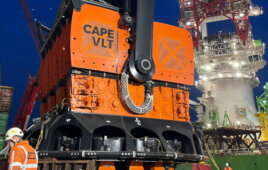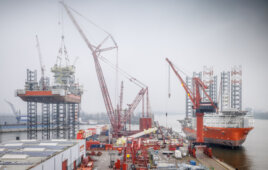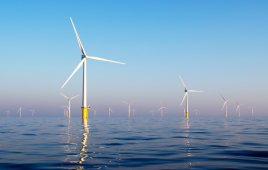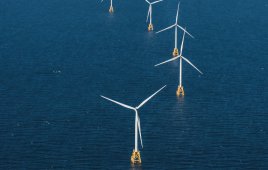Marco Veltri, Senior Technical Consultant, MSC Software, www.mscsoftware.com
Wind turbine designs must comply with exacting standards, such as International Electrotechnical Commission (IEC) load requirements, before they can go into production. Manufacturers must perform extensive load measurements on prototype turbines to validate design performance under different load conditions. This long and expensive process is a significant barrier to medium- and large-scale wind turbines reaching the market.
Simulation software is an obvious alternative to design based on physical testing on prototypes. Simulation and virtual testing are faster and less expensive than using physical models. They also yield better designs because it allows engineers to innovate freely without the risk of failed prototypes and the costs that go with them.
Simulation software isn’t new, but its cost and complexity have limited it to use at the very highest levels of the design process in industries such as automotive and aerospace. Highly paid Ph.D.-level analysts have been the primary users of simulation software for a generation. Companies typically employ multiple teams of them in dedicated disciplines for prescribed steps in a design process that can last years. That model obviously couldn’t work for wind turbine companies with fewer resources and shorter product lifecycles that require faster turnaround.
Simulation for all
Simulation software developers are releasing a steady flow of solutions that enable wind turbine manufacturers to more accurately predict long-term durability and performance. They address specific engineering needs at price and complexity points that make them practical for companies without huge engineering budgets.
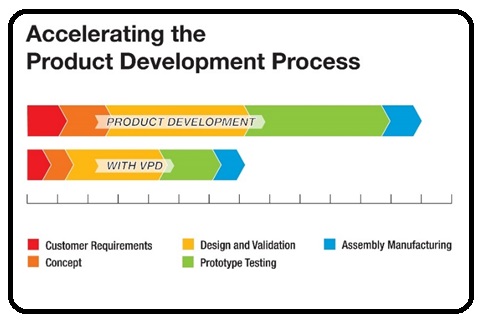
The bar chart illustrates the difference in the different phases of product development time in processes that do not integrate simulation (top) and those that do.
Traditional simulation tools require multiple specialized solvers, steep learning slopes and considerable simulation expertise. The latest trend in simulation software is to increase the automation and multi-disciplinary score with dedicated single-interface applications – more commonly known as wizards. The target user would be a domain expert, such as a wind-turbine systems specialist, rather than a single-discipline simulation software.
The current generation of finite element analysis (FEA), computational fluid dynamics (CFD) and multi-body system dynamics (MBD) software can model the performance all of the major elements of a wind turbine: foundations, towers, blades, hubs, gearbox housings, bearings, transmissions and controls. Component geometry can originate in any of the common CAD platform formats or can be directly generated via automated parametric design tools that are embedded in the vertical applications.
Increasingly the user-friendly dedicated solutions enable domain engineers – without help from analysts – to develop advanced wind turbine systems from the conceptual design phase to completion. They can start with simplified models and add complex sub-systems such as gears, rolling bearings, evaluating their performance as they step through the design process.
Simulation enables engineers to model the effects on their designs of aerodynamic and centrifugal forces, coriolis acceleration, gyroscopic movements, point loads, gravity, thermal loads, and wave loads from third parties. More advanced solutions enable engineers to innovate with advanced materials, such as carbon fiber composites, and change simulation parameters to check against varying wind conditions, and fault situations.
Once the wind turbine analytical system is in place, the thousands of loads and fatigue events that must be validated can be run automatically by a dedicated queue system. The results enable immediate identification of critical points for each load case. The simulation system can automatically produce succinct load reports according to certification requirements. Physical testing can be limited to a few selected and well-explored design variants, which reduces cost and cuts testing time.
Integrating simulation into its design processes will help the wind power industry address its unusual competitive situation. All sustainable energy sources are taking on a well-established competitor – the fossil fuel energy industry – and rely on unpredictable resources, i.e. the wind. These factors combine to put additional burdens on wind turbine manufacturers.
Turbines must have the fewest possible failures and performance degradations over the long term to be economically competitive with fossil fuel energy sources. That puts pressure on turbine manufacturers to test their designs even more exhaustively while at the same time facing market pressure to bring their products to market sooner.
As software vendors develop more accessible simulation solutions, they present wind turbine companies with opportunities to compress their design cycles by minimizing or removing mechanical load measurement requirements. Affordable, easy-to-use simulation solutions are the foundation of more efficient, reliable systems that in turn support continuous efforts to increase the amount of energy generated by each turbine while reducing production and maintenance costs.
Filed Under: News, Policy, Turbines

